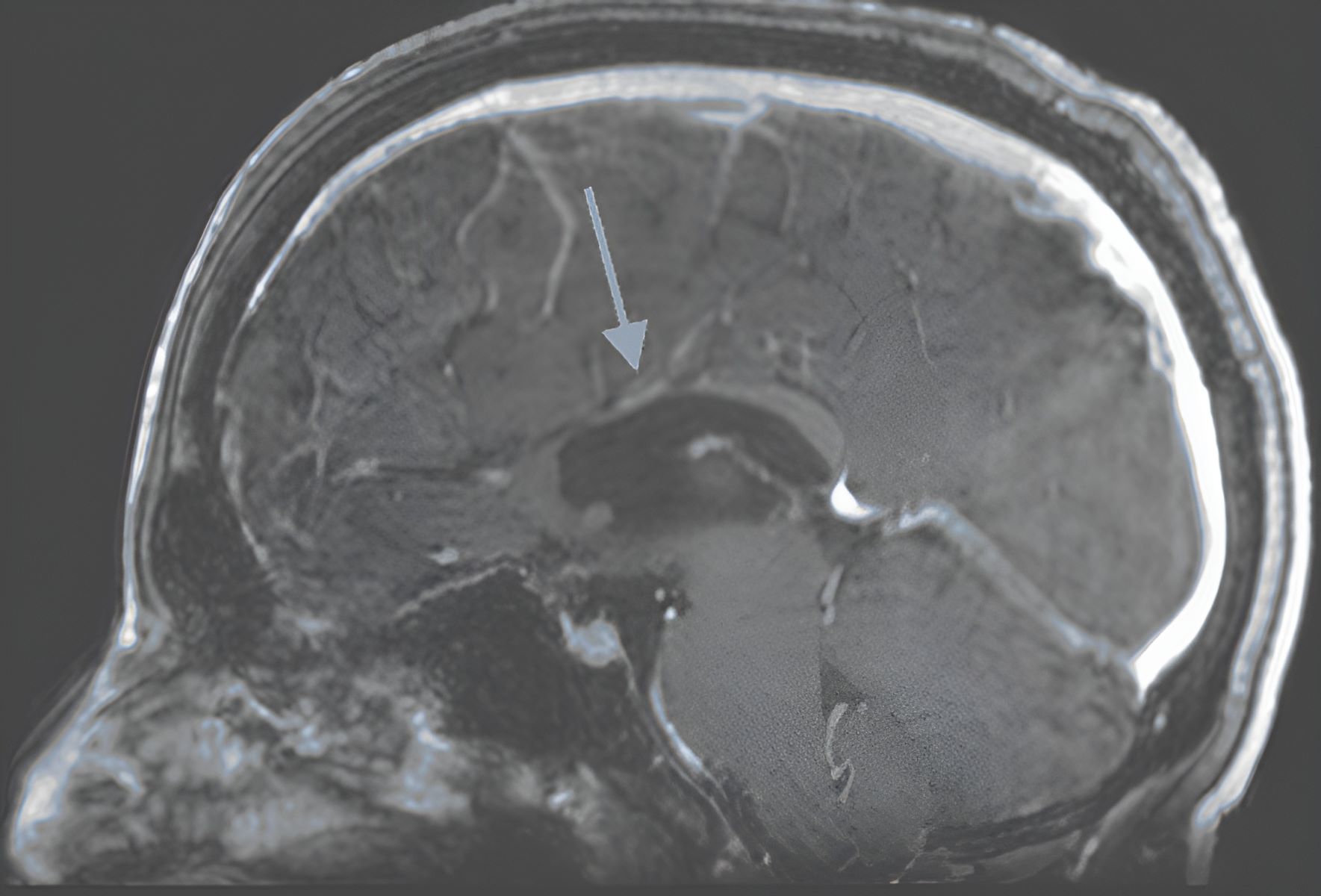
Shapiro Syndrome is a rare neurological disorder that can leave many puzzled. Ever heard of spontaneous hypothermia? That's one of its hallmark symptoms. Imagine your body temperature dropping without warning, causing chills and confusion. This condition, first described by Shapiro and Plum in 1969, also includes agenesis of the corpus callosum, meaning part of the brain that connects the two hemispheres is missing. Shapiro Syndrome doesn't stop there; it can bring on excessive sweating, altered consciousness, and even seizures. Though it's rare, understanding Shapiro Syndrome can help those affected manage their symptoms better. Let's dive into 40 intriguing facts about this mysterious condition.
Key Takeaways:
- Shapiro Syndrome is a rare disorder causing sudden drops in body temperature and excessive sweating. It's challenging to diagnose and manage, but research and support groups offer hope for patients.
- Living with Shapiro Syndrome can be tough, but dressing in layers, staying hydrated, and seeking support can help manage the condition and improve quality of life.
What is Shapiro Syndrome?
Shapiro Syndrome is a rare neurological disorder characterized by episodes of excessive sweating and hypothermia. It was first described by Dr. Asher Shapiro in 1969. This condition is often misunderstood due to its rarity and complex symptoms.
- Shapiro Syndrome is named after Dr. Asher Shapiro, who first identified the disorder in 1969.
- The syndrome is characterized by paroxysmal hypothermia, which means sudden drops in body temperature.
- Patients with Shapiro Syndrome often experience hyperhidrosis, or excessive sweating, during hypothermic episodes.
- The exact cause of Shapiro Syndrome remains unknown, making it a mysterious condition.
- It is considered an extremely rare disorder, with fewer than 100 cases reported worldwide.
Symptoms of Shapiro Syndrome
The symptoms of Shapiro Syndrome can vary widely among individuals. However, some common signs are frequently observed in patients.
- One of the hallmark symptoms is episodic hypothermia, where body temperature can drop to dangerously low levels.
- Patients may also experience hyperhidrosis, leading to excessive sweating even in cool environments.
- Some individuals report feeling cold and shivering uncontrollably during hypothermic episodes.
- Other symptoms can include fatigue, dizziness, and confusion due to the sudden temperature changes.
- In some cases, patients may experience muscle stiffness or weakness during episodes.
Diagnosis and Treatment
Diagnosing Shapiro Syndrome can be challenging due to its rarity and the variability of symptoms. However, there are some methods that doctors use to identify the condition.
- Diagnosis often involves a thorough medical history and physical examination.
- Doctors may use thermoregulatory tests to observe how the body responds to temperature changes.
- Blood tests and imaging studies can help rule out other conditions with similar symptoms.
- There is no specific cure for Shapiro Syndrome, so treatment focuses on managing symptoms.
- Medications such as clonidine and cyproheptadine have been used to help regulate body temperature.
Living with Shapiro Syndrome
Living with Shapiro Syndrome can be challenging, but there are ways to manage the condition and improve quality of life.
- Patients are often advised to dress in layers to help regulate body temperature.
- Staying hydrated is crucial, especially during episodes of excessive sweating.
- Some individuals find relief by using cooling devices or fans during hypothermic episodes.
- Regular follow-ups with a healthcare provider are important to monitor the condition.
- Support groups and counseling can help patients cope with the emotional impact of the disorder.
Research and Future Directions
Research on Shapiro Syndrome is ongoing, with scientists working to better understand the condition and develop new treatments.
- Genetic studies are being conducted to identify potential hereditary factors.
- Researchers are exploring the role of the hypothalamus, a part of the brain that regulates body temperature.
- New medications are being tested to see if they can more effectively manage symptoms.
- Advances in medical technology may lead to better diagnostic tools for Shapiro Syndrome.
- Increased awareness and funding for research could accelerate the discovery of new treatments.
Interesting Facts about Shapiro Syndrome
Here are some intriguing facts about Shapiro Syndrome that highlight its unique nature.
- Shapiro Syndrome is sometimes referred to as "spontaneous periodic hypothermia."
- The condition can affect individuals of any age, though it is often diagnosed in adulthood.
- Some patients experience episodes that last for several hours, while others may have symptoms for days.
- The frequency of episodes can vary, with some individuals experiencing them weekly and others only a few times a year.
- Shapiro Syndrome is considered a form of dysautonomia, a group of disorders that affect the autonomic nervous system.
Famous Cases and Awareness
Despite its rarity, there have been some notable cases of Shapiro Syndrome that have helped raise awareness.
- One of the first documented cases involved a young boy who experienced severe hypothermia and sweating episodes.
- Medical journals have published several case studies to help educate healthcare providers about the condition.
- Awareness campaigns and patient advocacy groups are working to increase understanding of Shapiro Syndrome.
- Social media has played a role in connecting patients and sharing information about the disorder.
- Documentaries and news articles have featured stories of individuals living with Shapiro Syndrome.
Challenges and Misconceptions
Like many rare disorders, Shapiro Syndrome is often misunderstood, leading to challenges for patients and their families.
- Some people mistakenly believe that the symptoms are psychological rather than physiological.
- The rarity of the condition can make it difficult for patients to find knowledgeable healthcare providers.
- Misdiagnosis is common, with some patients initially being treated for other conditions.
- The unpredictable nature of the episodes can make daily life challenging for those affected.
- Increased education and awareness are needed to improve diagnosis and treatment for Shapiro Syndrome.
Final Thoughts on Shapiro Syndrome
Shapiro Syndrome, a rare neurological disorder, presents unique challenges. Characterized by spontaneous hypothermia and episodic sweating, it often leaves patients and doctors puzzled. Understanding its symptoms and seeking early diagnosis can significantly improve quality of life. Treatment usually involves medications to manage symptoms, though there's no cure yet.
Raising awareness about Shapiro Syndrome is crucial. It helps in better diagnosis and support for those affected. If you or someone you know shows signs of this condition, consult a healthcare professional. Knowledge and early intervention can make a big difference.
Stay informed, stay proactive, and support research efforts. Every bit of awareness counts in the fight against rare diseases like Shapiro Syndrome.
Frequently Asked Questions
Was this page helpful?
Our commitment to delivering trustworthy and engaging content is at the heart of what we do. Each fact on our site is contributed by real users like you, bringing a wealth of diverse insights and information. To ensure the highest standards of accuracy and reliability, our dedicated editors meticulously review each submission. This process guarantees that the facts we share are not only fascinating but also credible. Trust in our commitment to quality and authenticity as you explore and learn with us.


